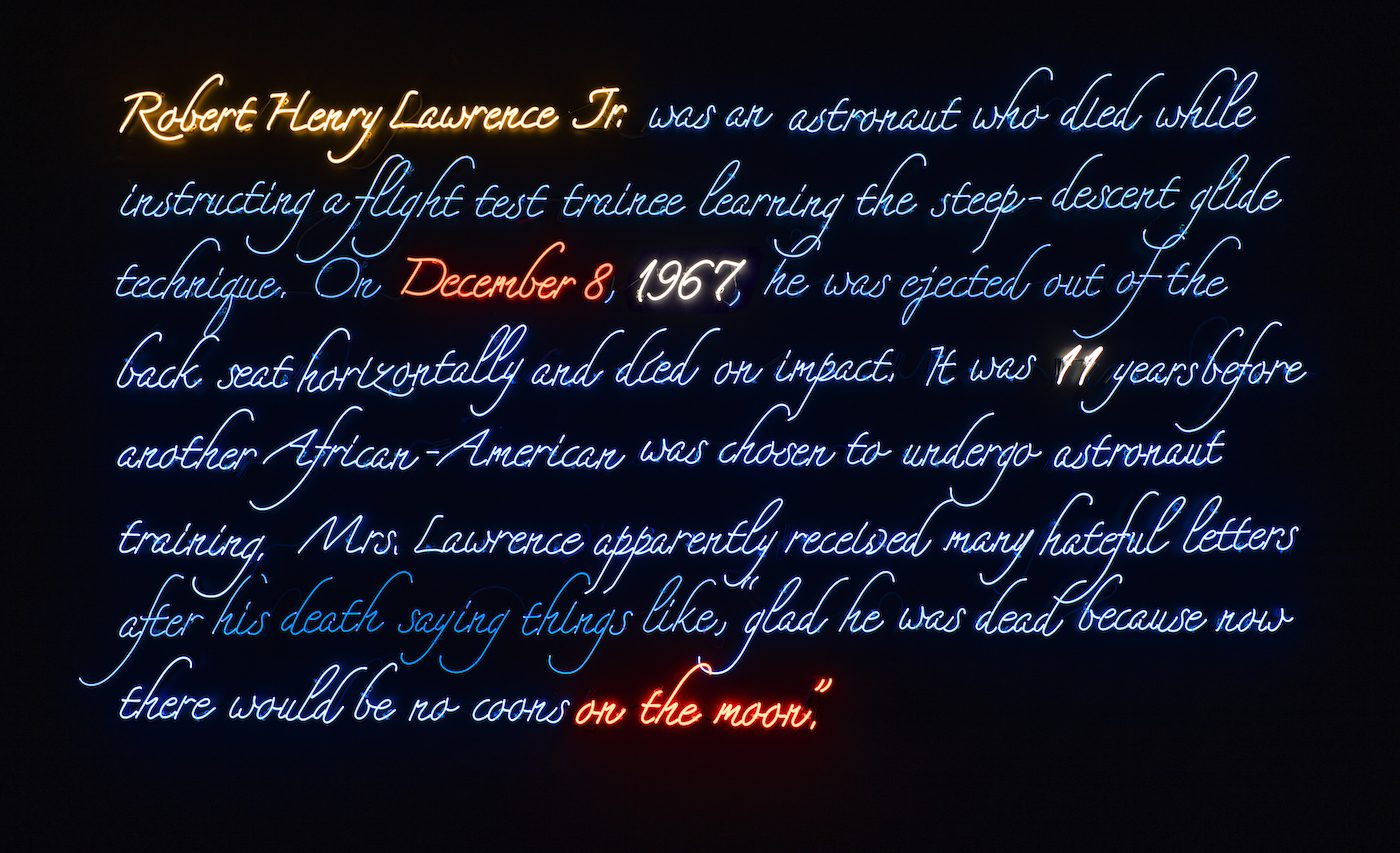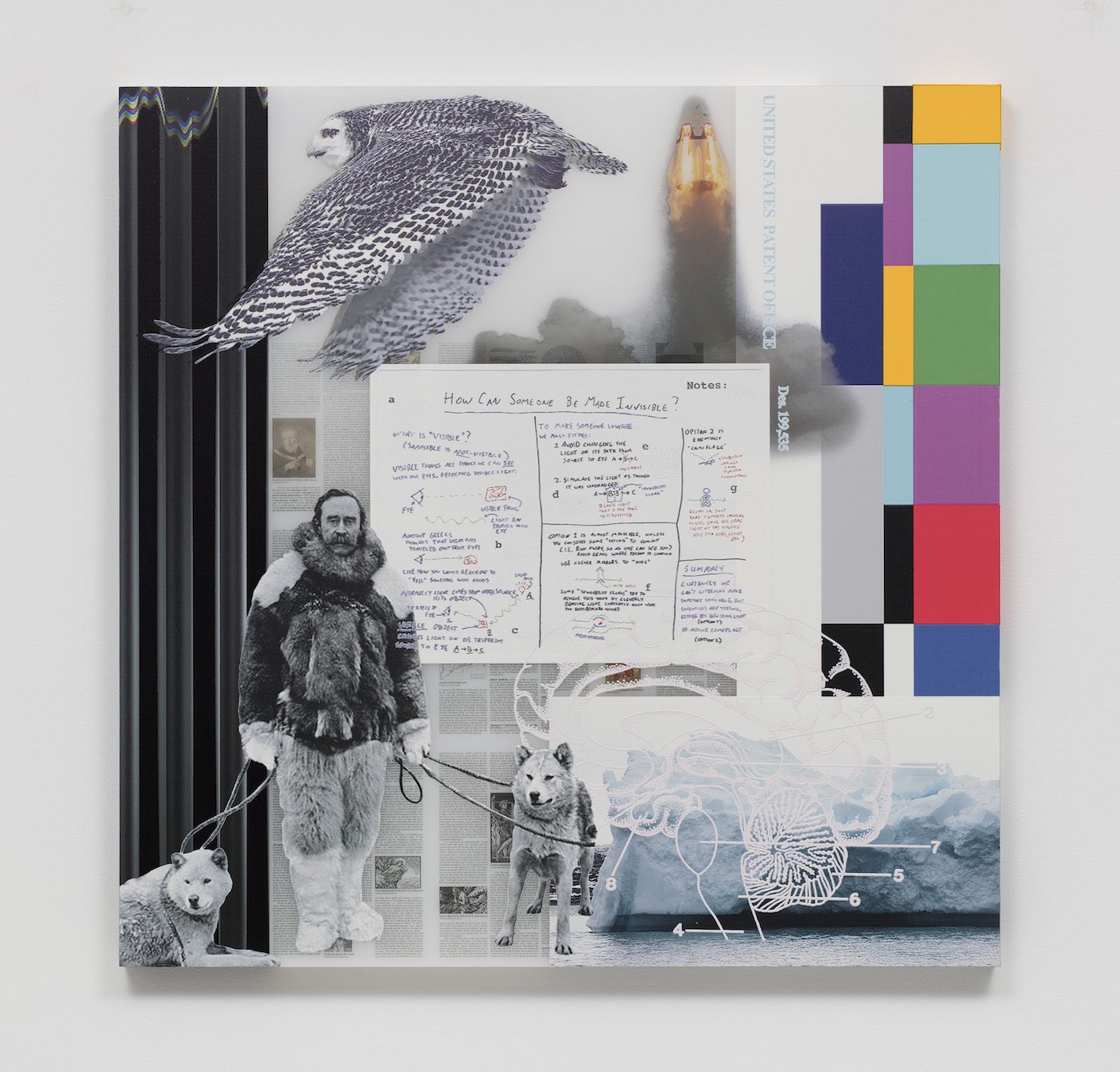Tavares Strachan represented the Bahamas National Pavilion at the 55th Venice Biennale, in 2013, with Polar Eclipse. The exhibition explored often invisible shifts in cultures and physical environments, recounting histories over both space and time, in the era of globalization and under normative narratives of progress. His conceptual multimedia installations investigate science, technology, mythology, history, and exploration. C& talks to him about the shift from representing the Bahamian pavilion to participating in the central exhibition of the 58th Venice Biennale, which is about limitations, duality, and the idea of a parallel universe.

Tavares Strachan, "Walcott (Hidden Histories)", 2018. Limestone, neon, transformers, books, pigment, enamel, vinyl and graphite mounted on custom metal shelf. Photo: Joshua White, Courtesy Regen Projects, Los Angeles
Contemporary And: This is your second time appearing as an artist in the context of the Venice Biennale. How do you experience the shift from national representation into the more “open” concept of a central curated pavilion?
Tavares Strachan: I think this is a good question. Venice has always had this long relationship with colonialism and imperialism in the sense of how the concept of the international biennale is produced. With that comes the idea of nationalism that underlies the Venice Biennale experience, and I think there is a lot of opportunity to play around with that limitation, or perceived limitation, as an artist.
When you’re in a group show you’re a little bit more passive because you’re not necessarily creating the full experience. You’re part of a larger story that the curator is telling. So I would say that those are two distinctive differences.

Tavares Strachan, “Robert Henry Lawrence Jr.”, 2018. 4500k neon, blue neon, yellow neon, orange neon, tube supports, transformers. Photo: Brian Forrest, Courtesy Regen Projects, Los Angeles
C&: This year’s central exhibition, May You Live In Interesting Times, features seventy-nine artists from all over the world. From your perspective how does this reflect on contemporaneity?
TS: I do think that wherever we are in, is an interesting time, going along with [the curator] Ralph Rugoff’s title. What’s interesting about this time is that there’s a real sense coming from artists that the way we thought one had to go about being an artist is not what you have to do, and that’s interesting irrespective of where you’re coming from because it codes the experience of being alive in 2019, being in a creative field where artists are really taking the power to voice their autonomy seriously and engage with communities in ways in which they weren’t necessarily able to do before. So that’s how I come back to that question.
I also think it’s an interesting moment in terms of current topics. But all the great artists I really look up to have been consistent and not interchangeable like a current topic.

Tavares Strachan, “Four Hundred Meter Dash”, 2018. Mylar, matte paper, pigment, spray paint, acrylic, oil stick, enamel, vinyl, graphite. Photo: Brian Forrest, Courtesy Regen Projects, Los Angeles
C&: During the preparation discussions with Rugoff and his team, were the artists involved in decision making within the overall concept and negotiations around where the works are placed?
TS: I think the hallmark of a good curator is a sense of community, of collaboration, and a sort of egalitarian perspective on exhibition making. I think Ralph has that, so it’s very fluid and that fluidity allows for creativity, artistic production, and the production of kinds of experiences that we’re not necessarily used to. It’s been great in that sense. I don’t think any decision was made without me or the team and that is phenomenal.

Tavares Strachan, “The Student”, 2018. Mylar, matte paper, pigment, enamel, vinyl, graphite, mounted on acrylic. Photo: Brian Forrest, Courtesy Regen Projects, Los Angeles
C&: The biennale map and curatorial statement suggest that each artist is given two spaces: “proposition A” in the central pavilion and “proposition B” in the Arsenale. Could you say something about this unfolding of an artistic narrative in two spaces?
TS: There’s something to say about the idea of a parallel universe but also about the idea of duality, and in these two ideas we get to talk about how an audience member experiences an artwork and how an audience member experiences an artist. I think the more of an artist you can see the more access you have to the work itself. Sometimes a failure of group exhibitions is that you just get samplings of an artist, which makes it hard to put the work into context – it becomes less about the artist and more about a sort of curatorial vision. I think what’s nice about doing it this way is there’s a balance in giving the audience a good sense of the artist and at the same time managing this really beautiful narrative, this curatorial vision. Doing it in both spaces helps to achieve that balance.
Through his career, Tavares Strachan has engineered a multidisciplinary artistic practice that mobilizes our visual, intellectual, and emotional faculties. Aeronautical and astronomical science, deep-sea exploration, and extreme climatology are but some of the thematic arenas out of which Strachan creates performative allegories that tell of cultural displacement, human aspiration, and mortal limitation. Strachan’s artistic practice and methodology often circumvent the usual narrative functioning in a more unconventional framework. Strachan’s ambitious and open-ended practice examines the intersection of art, science, and the environment, and has included collaborations with numerous organizations and institutions across the disciplines. isolatedlabs.com and basecproject.org
Interview by Esther Poppe.
More Editorial